Dropped from two-storeys, stomped on, tumbled down stairs, slammed into a wall – even hitting it with a hammer can’t smash the screen on this top-end smartphone.
he Moto X Force (known as the Droid Turbo 2 in the US) is the third in Motorola’s new Moto X smartphone line and claims to have a screen that will not break, no matter how many times you drop it. So we tested it to destruction.
The Force follows the good, mid-range Moto X Play and the excellent Moto X Style, as well as the successful Moto G, which is now in its third generation.
Contents
Design

The build quality is excellent and the screen is crisp and bright. Photograph: Samuel Gibbs
The Moto X Force isn’t a phone you would describe as pretty. The front of the device looks utilitarian, with a front-facing flash and two front-ported speakers at the bottom.
The phone has a trapezoid cross section and a back that comes covered in black nylon by default. It’s wide, solid and feels like a work horse that can take a beating, which is rather the point.
The Force is quite chunky by today’s standards at 9.2mm thick. But it’s relatively light, weighing 169g – which is 9g lighter than the 7.3mm thick Nexus 6P and 23g lighter than the 7.3mm iPhone 6S Plus.
The quad HD 5.4in AMOLED is of very high density with 540 pixels per inch, which makes it one of the crispest smartphones available. It’s pin-sharp, has very good blacks and is bright and vibrant. It’s a high-quality display that shows no visible signs that it is different from those fitted to devices such as a Samsung Galaxy S6 or iPhone 6S.
The front-facing speakers below the screen are not a stereo pair, but are loud enough to annoy everyone on the train.
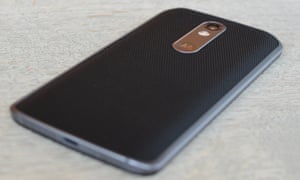
Specifications
- Screen: 5.4in quad HD AMOLED (540ppi)
- Processor: octa-core Qualcomm Snapdragon 810
- RAM: 3GB of RAM
- Storage: 32/64GB + microSD
- Operating system: Android 5.1.1
- Camera: 21MP rear camera, 5MP front-facing camera
- Connectivity: LTE, Wi-Fi, Bluetooth 4.1, GPS, NFC, wireless charging
- Dimensions: 149.8 x 78 x 9.2mm
- Weight: 169g
Hardware
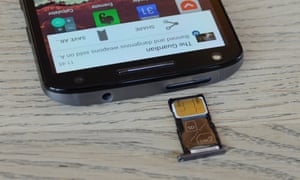
The Moto X Force has Qualcomm’s top-of-the-line 810 processor with 3GB of RAM, which is pretty standard for a flagship smartphone from 2015.
It feels snappy and powers through pretty much anything. It got quite warm when downloading multiple things, but wasn’t overly hot when playing games or other demanding tasks.
Motorola says the Moto X Force should last 48 hours of mixed use with a large 3,760 milliampere-hour battery. For comparison, the Samsung Galaxy S6 Edge+has a 3,000mAh battery and the iPhone 6S Plus a 2,750mAh battery.
I found the Force consistently lasted two working days, but not quite 48 hours. With about two hours of browsing, hundreds of push notifications and emails, as well as 90 minutes of listening to music via Bluetooth headphones a day, it would be on its last legs when going to bed on the second day and dead by the time I woke up for the third day.
Only Sony’s Xperia Z5 Compact has consistently lasted longer in my testing.
The Force isn’t waterproof, but has a water repellent coating, which will help it survive a drink being spilt over it. It didn’t die when I spilt coffee on it, which is good. There’s a microSD card slot in the sim tray in the top of the device for adding more storage.
Software

The Moto X Force runs the same version of Android 5.1.1 Lollipop as Motorola’s other Moto X smartphones, with little in the way of modifications from the standard Android experience.
Motorola has added a few apps, including the Moto app that supports gestures such as karate chop to switch on the torch and a quick twist to launch the camera app. It also has expanded voice control and Motorola’s active display, which lights the display with notification icons and the time when you approach the phone with your hand. All work well.
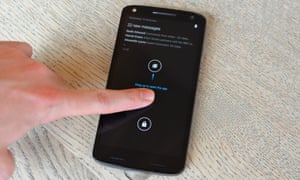
For more information see the Moto X Style review.
It’s a shame that it didn’t ship running the latest version of Android 6.0 Marshmallow. Motorola has promised an upgrade to the new version, but hasn’t given a date yet for when that will happen. The Force also ships withvulnerabilities to the Stagefright bug, which isn’t great.
Camera

The 21-megapixel camera is similar to that fitted to the Moto X Style, and produces very good images in good lighting conditions, with excellent colour and detail.
It has no optical image stabilisation, however, and struggles a little more than some high-end rivals in low-light conditions.
The 5-megapixel selfie-camera is one of the best available, but the front-facing flash does little to help anything taken more than an arm’s length away.
The camera app, however, is poor. I got much better results from the camera using Google’s free camera app. I found the Motorola camera app consistently failed to focus where I wanted it to in standard tap-to-shoot mode; the drag to focus is clumsy compared to simple tap to focus.
Shatterproof screen
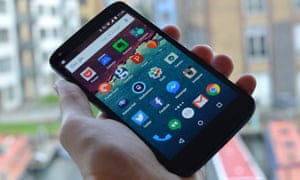
The rest of the phone is solid, but the reason you’d buy the Moto X Force is for the “shatterproof screen”.
A standard smartphone screen typically has three or four layers, including the display. The glass on top, a touchscreen layer and then the display underneath, as well as some sort of frame. The Moto X Force has six layers: a user-replaceable, scratch-resistant top layer, a second transparent layer, two touchscreen layers – just in case one breaks – the AMOLED display, and a rigid aluminium back to hold it together.
It’s not often I’m thoroughly impressed by a new piece of technology, but the Moto X Force lives up to Motorola’s claims. No matter how rough I treated it, the screen would not shatter. It even withstood a good blow from a hammer – and the touchscreen still worked.
Price
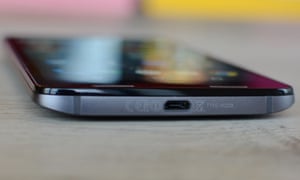
The Motorola Moto X Force costs £499 for the 32GB version and £534 for the 64GB version.
For comparison, an iPhone 6S Plus costs £619, a Google Nexus 6P costs £449 and a Samsung Galaxy S6 Edge+ costs £555.
Verdict
The Moto X Force is an excellent road-warrior phone. It’s solid, lasts two days at a pinch, has a decent camera, wireless charging and great-looking screen.
There are a few downsides: it doesn’t ship with the latest version of Android, is vulnerable to Stagefright, there is no fingerprint scanner, and it won’t be aesthetically pleasing to most.
But all of those are far outweighed by the fact that you simply can’t smash the screen. If you ever drop your phone or think you might, the Moto X Force is the answer. It’s really quite remarkable.
Pros: literally shatterproof screen, excellent display, fast, great battery life, good camera, microSD card slot, turbo charging, wireless charging
Cons: no fingerprint scanner, no Android 6.0 Marshmallow, vulnerable to Stagefright, battery isn’t removable
[Source:-the gurdian]
